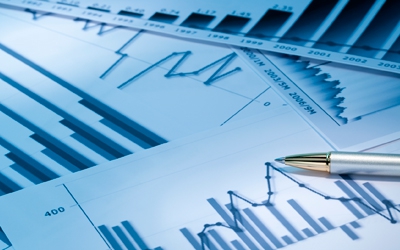Almost any enterprise operates with the involvement of production assets. The level of their manufacturability, structure and origin can be very different - this is determined by the specifics of the business segment or a specific section of the business process. However, regardless of the specifics of the fixed assets of the company, there are quite universal methods for assessing the effectiveness of their use. What can be the algorithms for their application? What are the key criteria for the effectiveness of involving fixed assets in businesses that are determined by Russian researchers?
Involvement of fixed assets: indicators on capital productivity
Carrying out the analysis of indicators of the use of fixed assets, it makes sense to pay attention to return on assets. By such is meant the ratio of the volume of products produced in a particular period to the average cost over the same time interval, which characterizes fixed assets.

The indicator under consideration reflects how much production, calculated in value terms, was released by the enterprise in a particular period, based on a conditional unit of the value of the funds, for example, 1 ruble. The higher the figures reflecting the return on assets, the more efficiently the fixed assets are involved, the more balanced and stable the business model of the enterprise.
Capital intensity
The most important indicators of the use of fixed assets also include capital intensity. It is calculated as the value of the respective funds, which falls on the conventional unit of output (as an option, also 1 ruble). The lower the capital intensity indicators, the more economical it will be labor intensity at the enterprise.
The indicators of expenditure of fixed assets considered by us are used in the study of various economic processes. For example, with regard to capital productivity: this value shows how much output is received from the established unit of investment, and is used to assess the economic efficiency of involving funds. In turn, capital intensity is more designed to assess the amount of financial resources that need to be invested in appropriate funds in order to obtain the required volume of production.
Capital ratio
Consider other significant indicators of the use of fixed assets. This can be considered an indicator that reflects the current level of capital productivity of the enterprise. This indicator is used to assess the degree of equipment of company employees with the necessary infrastructure. The indicator of capital-labor ratio most often correlates with return on assets or with figures reflecting labor productivity.
The dynamics of the state of funds
The considered indicators characterizing the efficiency of using fixed assets are useful to consider with indicators reflecting the dynamics of the corresponding resources. These may be the coefficients - updating funds, their disposal, growth, intensity of the rate of updating, as well as liquidation.Let's consider them in more detail.

The update coefficient reflects the cost indicators for the key production assets received by the company for a specific period of time, which is divided by the cost of current resources that are at the disposal of the enterprise. What is its usefulness?
This indicator allows you to assess the ratio of the value of funds that were introduced during the year to indicators characterizing the value of resources at the end of the year. This indicator can be supplemented by an income ratio. It is calculated as the ratio of the value of funds received by the enterprise to the corresponding indicator reflecting the value of funds held by the company at the end of the year.
The retirement rate is defined as the value of funds that are retired from production in a particular period, divided by a value that reflects the value of fixed assets that were at the enterprise at the beginning of the corresponding period.

Indicators characterizing the use of fixed assets also include a growth rate. This indicator is defined as the sum of the increase in the volume of funds divided by the value of fixed assets that the company had at the beginning of a given period.
Another important indicator is the coefficient reflecting the intensity of updating resources. It is defined as the value of disposed funds during the year, which is divided by the corresponding indicator that reflects the receipt of funds during the year.
The liquidation ratio is determined by dividing the indicator of liquidated funds to those that were at the disposal of the company at the beginning of the year.
In some cases, the considered indicators of the use of fixed assets are supplemented by a replacement ratio. It is calculated as the value of funds that are liquidated, divided by the corresponding indicator for new funds.
Analysis of the current status and involvement of funds
The performance indicators of the use of fixed assets considered by us can, on the one hand, be the subject of a separate analysis aimed at identifying the quality of business processes, and on the other hand, supplement other analytical procedures aimed at identifying the production optimization potential.

So, the corresponding direction of work may be associated, first of all, with the study of groups of key factors affecting the efficiency of use of fixed assets. Among the possible factors of the corresponding type are those that:
- associated with the presence at the enterprise of various infrastructure resources;
- affect the security of employees of the enterprise with the necessary objects of labor;
- associated with the dynamics of the involvement of labor resources in the enterprise.
The main task of analysts in this case is to determine how these factors and indicators of efficiency of use of fixed assets are correlated. In the course of the implementation of the relevant work, it is necessary to identify how the noted factors affect the intensity of the output of goods. Consider an example of an algorithm for analyzing the effectiveness of involving fixed assets on the example of factors of the first type.
Infrastructure as a factor in the effectiveness of fixed assets
In this case, infrastructure should be understood as the totality of the means of labor that employees of the enterprise use to produce products or to service certain production operations. The key sources in the analysis of the influence of the factors in question will most likely be documents related to accounting, inventory cards, certificates of transfer and acceptance of funds, various invoices reflecting the turnover of fixed assets within the enterprise, documents in which circulation is recorded to repair services.
The first stage of the analysis will include a study of the structure of fixed assets. In solving this problem, it is necessary, first of all, to calculate the ratio of various types of resources to their total cost.If the indicators of the use of fixed assets in terms of the structure of the corresponding resources show an increase in those infrastructure components that directly determine the volume of output of goods, then we can talk about the positive dynamics of capital productivity.
The next task is the calculation of key coefficients reflecting the intensity of the rate of renewal, disposal of funds or growth of fixed assets. The way in which you can determine the relevant indicators of the movement and use of fixed assets, we have considered above. It is recommended to calculate these coefficients for several periods at once, so that you can track the dynamics of the marked processes. Also, experts believe that it is advisable for the enterprise to examine the age of various types of infrastructure equipment and group fixed assets based on the terms of their operation. This will allow to determine the proportion of resources that are characterized by the highest efficiency of equipment with average productivity, as well as the share of outdated infrastructure.
In some cases, this grouping can be supplemented by indicators of the use of fixed assets, such as, for example, coefficients reflecting the degree of wear and tear. Comparison of these indicators will allow, again, to monitor the status of the company's resources in dynamics.
The technological level of infrastructure as a factor in production efficiency
What other indicators can predetermine production efficiency, not counting those that we examined above? Among these, modern researchers identify parameters that allow us to assess the technological level of the enterprise infrastructure. This is logical: it may well be that two firms will have equipment with the same cost, but different performance due to differences in the level of technology involved in the production of devices.

The business model of a company with more modern infrastructure is likely to be significantly more effective. The criteria for determining the level of manufacturability of equipment at the enterprise can be very different. Modern researchers recommend a grouping of various infrastructure resources, depending on whether they are:
- devices with manual control;
- devices that are partially mechanized;
- devices with partially automated control;
- fully automatic devices;
- programmable equipment functioning with the participation of a person;
- fully autonomous programmable devices.
Based on the relevant grouping, indicators of the state and use of fixed assets in the form of infrastructure mechanization levels can be determined.
Infrastructure Maintenance Indicators
Another significant criterion for assessing the effectiveness of fund utilization is indicators reflecting the intensity of servicing production infrastructure. The corresponding indicators of the use of fixed assets of the enterprise can be very different. Modern researchers distinguish 2 main:
- level of mechanization of labor;
- labor automation indicators.
The first parameter is defined as the number of employees involved in servicing mechanized infrastructure, which is divided by the total number of workers in the workplace. The second indicator is defined as the number of employees involved in servicing automated devices, which is divided by the number of production personnel.
Infrastructure Usage Indicators
Another most important criterion for the effectiveness of the use of fixed assets is the values that form the indicators of the use of infrastructure. Here the formation of two main indicators is possible.
Firstly, it is a coefficient reflecting the extensive use of production equipment. It is defined as the number of hours of operation of the equipment, which is divided into the corresponding planned indicator.
Secondly, it is a coefficient reflecting the intensive use of infrastructure. It is determined by means of complex formulas that imply a comparison of indicators of the number of manufactured products with planned ones, as well as a comparison of measurement results for different periods or with production indicators that are recorded on other factory lines or enterprises of a similar profile.
Enterprise Reserves
The indicators we have examined that characterize the efficiency of using fixed assets can be supplemented by indicators reflecting the presence of certain reserves in the enterprise that can be used to increase the volume of output of goods.

Such may be, in particular, stocks of equipment that is delivered to the enterprise, but not accounted for as part of the production infrastructure. Another potential reserve company - the use of shift when using the infrastructure. A very effective measure to increase the productivity of factory lines can be to eliminate the causes that determine equipment downtime.
Another effective backup mechanism is to reduce the idle time of equipment included in the infrastructure. Another possible resource to increase the intensity of the operation of factory lines is the implementation of organizational measures aimed at optimizing the time costs associated with the production of one unit of goods. This approach can be supplemented by the adoption of decisions on the direction of the necessary investments in the purchase of more advanced elements of production lines.
Summary
So, the performance indicators of the use of fixed assets at the enterprise can be represented in a fairly wide range of varieties. They can be conditionally classified into those that allow you to evaluate the current indicators of production processes, as well as those through which you can monitor certain business processes in dynamics. There are general indicators of the use of fixed assets, and there are those that allow you to detail business processes, depending, for example, on the level of manufacturability of production equipment.
The need to use certain indicators can be predetermined by the current tasks facing the management of the company. For example, if we are talking about building a strategic planning model, then generalizing indicators may be priority; if the task is to increase the output intensity of a particular product, then indicators that testify to the efficiency of specific production lines can be investigated.
Indicators of the level of use of fixed assets are useful in terms of identifying priority items for investing in the form of retained earnings, loans or financial assistance provided to businesses by the state or partner organizations. In this sense, the quality of analytical work in those areas of which we spoke above can be a determining criterion for the effectiveness of the use of relevant financial resources.
The indicators of efficiency of using fixed assets of the enterprise that we have considered can be a significant component of the analysis of the effectiveness of a business model. For companies specializing in the industrial production of goods, the corresponding procedure is a necessary condition for ensuring competitiveness, optimizing the business model in terms of increasing the profitability of the company, expanding the geography of its presence on the market by increasing the investment attractiveness of the brand.

Performance indicators for the use of fixed assets can supplement reporting - accounting, tax. We noted above that a number of indicators necessary for conducting analytical work to study the business model of a company are determined on the basis of information that includes just the same accounting documentation.
